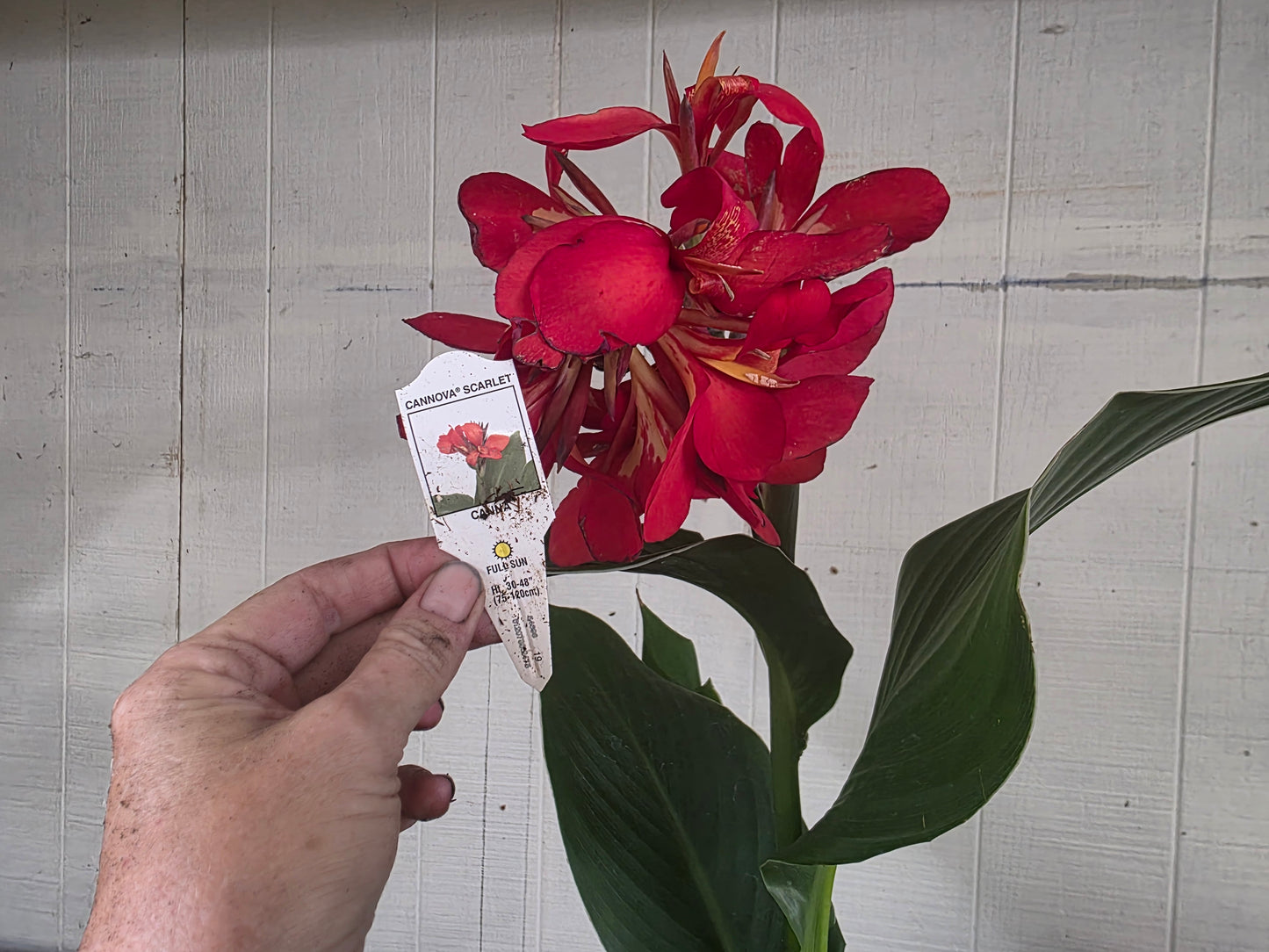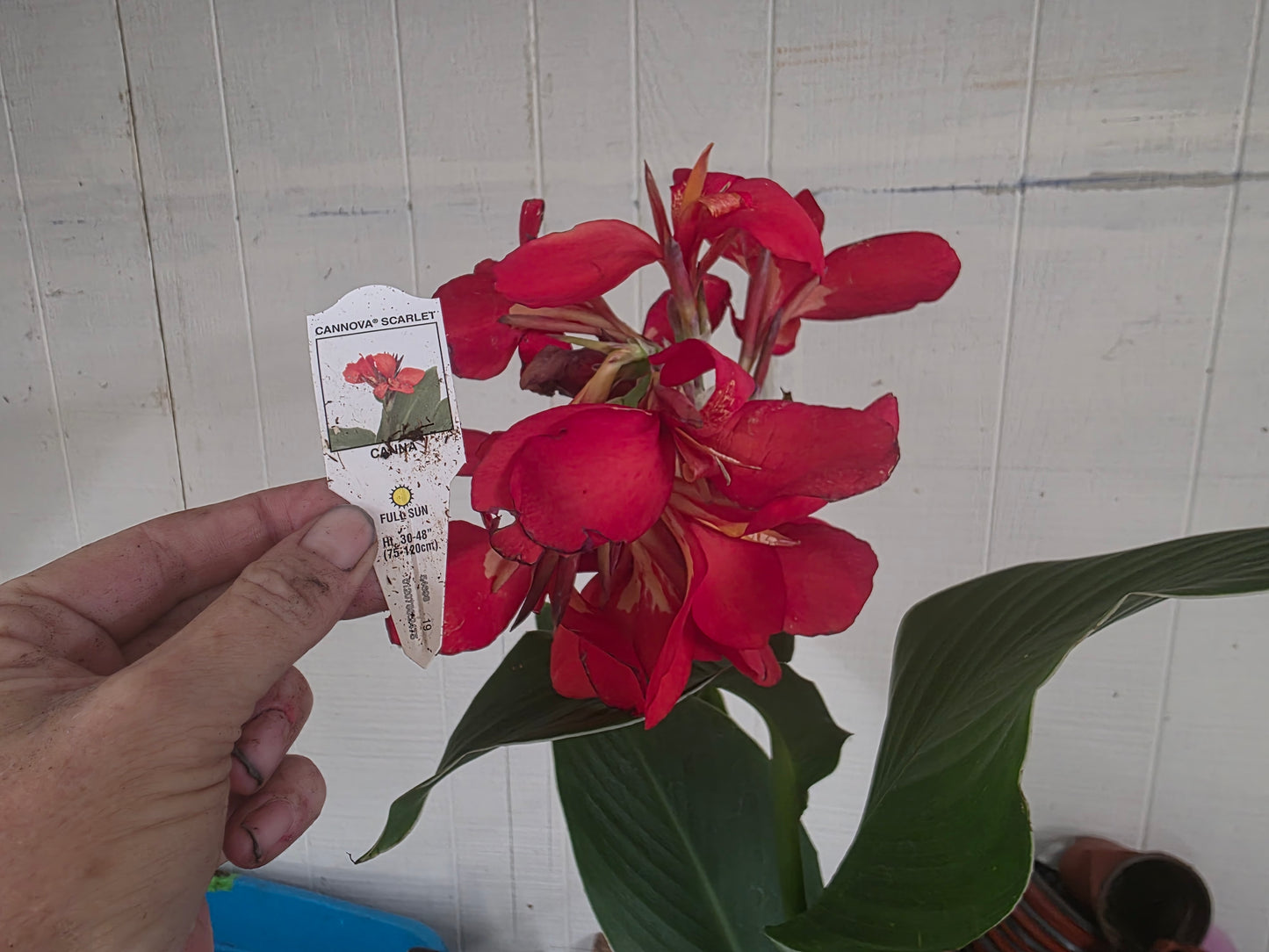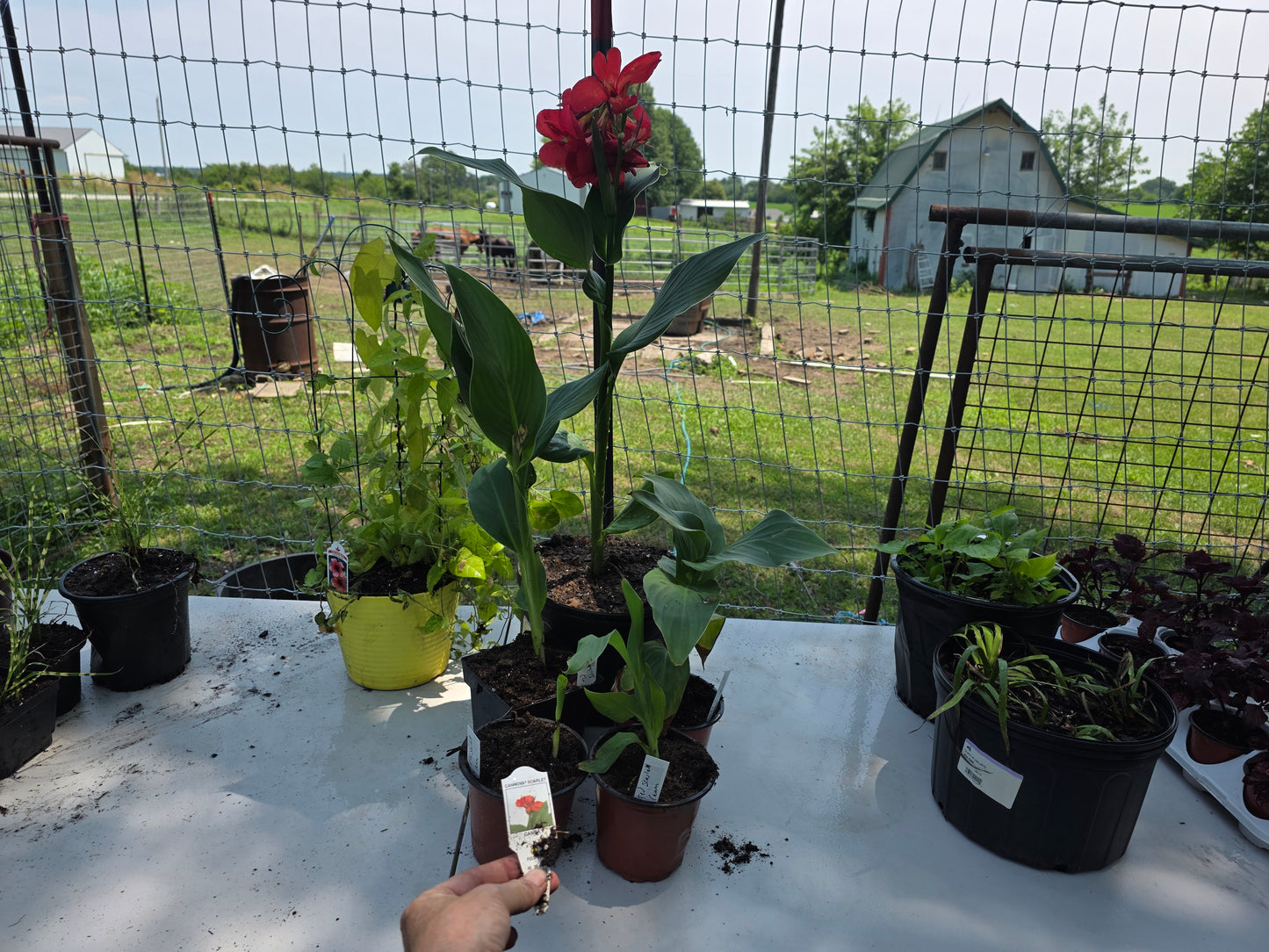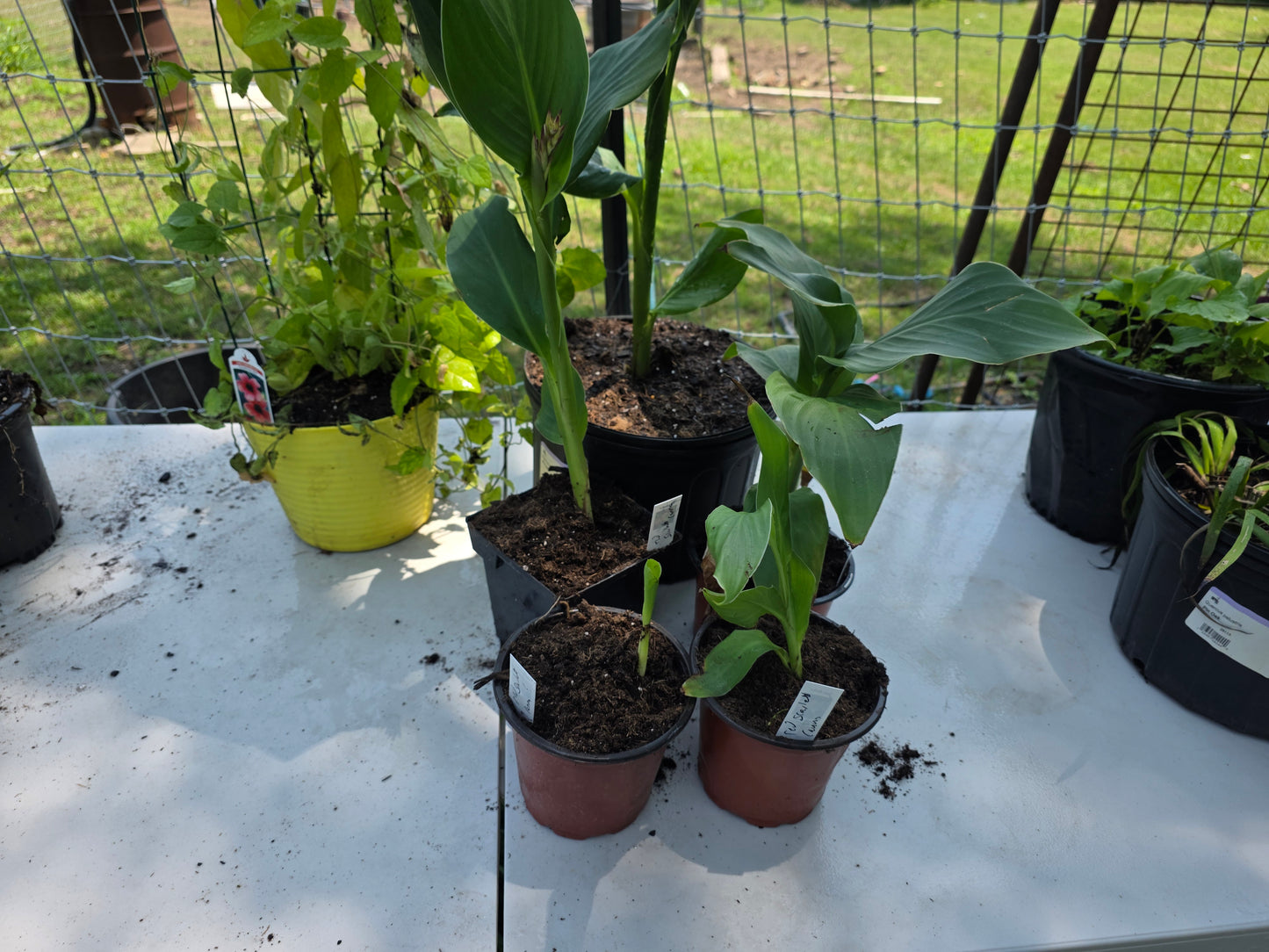Diane Van Dyk Co
CANNOVA SCARLET 'Canna live plant
CANNOVA SCARLET 'Canna live plant
Couldn't load pickup availability
Gorgeous deep red s flowers . This also has beautiful green leaves. Ships about 8+ inches tall with no pot, bareroot. Suitable for around ponds or sunny spots
Cannova Scarlet Canna Lily, also known as Cannova® Bronze Scarlet Canna or Canna x generalis 'Bronze Scarlet', is a vibrant and popular flowering plant known for its bold scarlet-red blooms and attractive coppery-bronze foliage. It belongs to the Canna lily family and is a product of hybridization efforts, with the Cannova series developed by Takii Europe B.V.. This plant is native to tropical and subtropical regions of North and South America, thriving in hot and humid climates. In warmer zones, it can be an herbaceous perennial, while in cooler climates it's often treated as a lush tropical annual.
Here's a summary of its key characteristics and care:
Appearance
Flowers: Features bold spikes of scarlet, flag-like flowers, blooming from mid-summer to early fall (July-September).
Foliage: Large, glossy, pointy leaves emerge green in spring and transition to a coppery-bronze color with burgundy spines throughout the growing season.
Form: Has a rigidly upright and towering form, adding a bold and coarse texture to garden compositions.
Size: Quickly reaches a height of 30-48 inches (76-122 cm) and a spread of 14-20 inches (36-51 cm).
Growing conditions and care
Sunlight: Requires full sun exposure (6-8 hours of direct sunlight) for optimal growth and flowering.
Soil: Thrives in loose, nutrient-rich, evenly moist, and well-draining soil with a pH between 6 and 7.5. While it enjoys moist conditions, it won't tolerate standing water, which can lead to root rot.
Watering: Needs regular watering, approximately once a week, especially in hot and dry weather. Ensure the soil remains moist but not waterlogged.
Fertilizing: Benefits from a balanced, slow-release fertilizer during planting and monthly during the growing season. Use a compound fertilizer like N-P-K 10-10-10 or 5-10-10. Avoid excessive nitrogen, which can inhibit blooming.
Pruning: Prune dead or damaged leaves in early spring to encourage healthy growth and airflow. Remove spent flowers (deadheading) to promote continuous blooming.
Propagation: Can be propagated by sowing seeds indoors in colder areas or by division of rhizomes (bulbs) in spring.
Transplanting: Best transplanted in early to late spring, allowing it time to establish before summer heat.
Overwintering: In regions below USDA Hardiness Zone 7, lift rhizomes after the first frost in the fall and store them in a cool (7-13 ℃), dry, and well-ventilated place for replanting in the spring. Apply a thick layer of mulch around the root zone in exposed locations or colder microclimates for winter protection.
Uses and benefits
Landscape: Ideal for borders, mass plantings, poolside areas, and as a dramatic accent plant.
Containers: Well-suited for container gardening, particularly as a "thriller" in container combinations due to its upright habit.
Wildlife: Attracts hummingbirds and butterflies.
Cut flowers: Provides long-lasting cut flowers.
Low maintenance: Considered relatively easy to care for.
Heat tolerant: Thrives in hot, humid climates.
Tolerates wet areas: While preferring well-drained soil, it can tolerate occasional wet, poorly drained conditions.
Urban pollution tolerant: Highly tolerant of urban pollution.
Potential problems
Overwatering: Susceptible to root rot if the soil remains waterlogged.
Pests: Watch out for thrips and red spider mites.
Diseases: Can be affected by brown spot and bacterial leaf rot. Ensure proper pruning and sanitation to prevent disease spread. All cannas are susceptible to the canna virus, so purchase virus-free plants and monitor for symptoms like stunted growth, distorted and discolored foliage, and reduced flowering.
Yellowing Leaves: Can indicate overwatering, root rot, or natural aging.
In conclusion
Cannova Scarlet Canna is a beautiful and relatively low-maintenance plant that can add a touch of tropical flair to your garden or patio. By providing adequate sunlight, well-drained soil, and proper watering, you can enjoy its vibrant flowers and striking foliage throughout the growing season. Remember to lift the rhizomes in colder climates to ensure their survival through the winter.
Share










